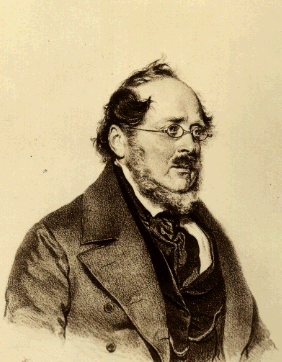Introduction to INTERNATIONAL ECONOMICS
ECON 204
Phil Martinez, Lane Community College

Introduction to INTERNATIONAL ECONOMICS
ECON 204
Phil Martinez, Lane Community College

I. COMPARATIVE STATUS OF TRADING NATIONS (2Weeks)
A. International and Development Economics & Their Goals
- Ch.1 Economics, Institutions and Development: A Global Perspective, Economic Development, 5th Ed., Michael Todaro, Longman : pp.3-20.
B. Alternative Measures of Performance & Comparative Status: GDP & growth, HDI & sustainability,...measuring progress?
- Appendix 2.1: Social Indicators as Alternative Measures of Development: The Physical Quality of Life and The Human Development Indexes, Michael Todaro, op cit: pp.60-65.
- Why International Statistical Comparisons Don't Work, NYTimes, Sylvia Nasser
- Various graphs and data
C.Theories of Economic Development
- Ch. 3 Theories of Development: A Comparative Analysis, Michael Todaro, op cit: pp. 67-92.
D. Comparative Development. Experience
- Ch.4 Historic Growth and Contemporary Development: Lessons and Controversies, Michael Todaro, op cit: pp. 99-117.
Case Studies presented in Lecture (Time Permitting):
- U.S. - U.K.
- U.S.S.R. - China
- Mexico, Brazil, India, et al
- Japan & the "Asian tigers"
- Germany, France, et al
II. CLASSICAL FREE TRADE THEORY (1-2 Weeks)
A. MercantilismB. Adam Smith & Absolute Advantage
Adam Smith
C. David Ricardo & Comparative Advantage
David Ricardo
- Ch. 35 International Trade:..., Principles of Econ , WSBrown, West Pub, p.909-18
- Why Nations Trade , Gonelli
- The Economics of Free Trade, The Economist
- Petition of Candlemakers
- Tariffs Undermine Free Trade, George Will
D. Free Trade and Development
- Ch.12 Trade Theory and Development Experience, Michael Todaro, op cit: Excerpts pp.407-440.
III. PROTECTIONISM (1/2 Week)
A. Tariffs, Quotas and Voluntary Export Restrictions (VERs)B. Non-Tariff Barriers
Ch.35 Supply & Demand Analysis ...Ibid.: p.921-925,926-937Who Gains From Trade?, Mehrene Larudee, Real World Macro, 11th Ed.
IV. TRADE POLICIES (1/2 Week)
A. Infant Industries & Import Substitution IndustrializationB. Export Orientation, Industrial & Strategic Trade Policies
Ch 37 The New International Economics, Ibid.: p.975-980
V. COMPARATIVE TRADE REGIMES (2Weeks)
A. The U.S. & the Free Market (aka "The Anglo-American Model")Economic theory, reality clash, William PfaffCapitalism: Today's 'vision'...William Pfaff
B. Japan & Planning, Protection and Export Promotion (aka "The Asian Model")
What Is an Economy For?, James Fallows, The Atlantic MonthlyConfucianism as a Basis for Capitalism, Morishima Michio
A Statement Against Free Competition, Morozumi Yoshihiko
The "Human-Capital-ism" of the Japanese Firm as an Integrated System,
Hiroyuki ItamiJapanese Industrial Policy: International Repercussions, Kozo Yamamura
The Costs of Japanese Industrial Policy, Daniel I. Okimoto
C. Germany the Social Welfare (aka "The European Model")

Friedrich List
How the World Works, James Fallows, The Atlantic Monthly
Against All Odds, J.Branegan & B.vanVoort, Time Magazine
French distrust U.S. capitalism, William Pfaff
D. The U.S. and Strategic Trade Policy?
Strategic Trade Policy & Commercial Jet Aircraft, Robert CarbaughWe Need a Strategic Trade Policy, Robert Reich
Making the Best of the Second Best, Laura D'Andrea Tyson
VI. TRADE LIBERALIZATION & INTERNATIONAL REGULATION
(1 Week)
A. Economic Integration & "Globalization"Made in the U.S.A., Parade Magazine'Buy American' movement misses point, The Associated Press
America's No.1 Car Exporter Is Japan?
Who Is Us?, Robert Reich
They Are Not Us, Laura Tyson
B. General Agreement on Trades and Tariffs (GATT) &World Trade Organization (WTO)
Ch 35 Focus On: GATT, Ibid.: p.926-7More Trade Is Better than Free Trade
C. Environmental & Trade Regulation
VII. REGIONAL TRADING BLOCS (2 Weeks)
A. The European UnionCh 37, Regional Integration, Ibid.: p.980-989B. NAFTA
1. The View from Mexico
Can NAFTA Change Mexico?, Jorge Castaneda, Foreign Affairs, Sept. 1993.Critical View of a NAFTA Including Mexico, Adolfo Aguilar Zinzer,
NAFTA as a Model of Development, Belous & Lemco, eds.
(National Planning Asso. 1993).
Mexico's Interests and the NAFTA, Jorge Bustamante, Ibid.
What Mexico (and the U.S.) Wants, John Kenneth Galbraith
2. The View from the U.S.
NAFTA: Review Of The Issues, Linda AguilarThe Benefits of NAFTA..., Federal Reserve Bank of Dallas
Grasping the Benefits of NAFTA, Peter Morici
The NAFTA Illusion, Jeff Faux
The NAFTA Debate: Myths versus Facts, William A. Orme, Foreign Affairs,
V.72 no.5, Nov. 1993
The Uncomfortable Truth About NAFTA, Paul Krugman
VIII. LABOR & CAPITAL MOBILITY (Time Permitting)
A. Labor MigrationB. Migration of Technology, the Technology Life Cycle
C. The Role of Multi-National Corporations
IX. BALANCE OF PAYMENTS & EXCHANGE RATES (1 Lecture)
A. Current Account, Capital Account and Trade DeficitsB. Exchange Rates
Fixed vs. FloatingTarget Zones
X. MONETARY POLICY (1 Lecture)
A. Interest Rates & InflationCh 36, Ibid.B. Managing National Interest Rates
Ch 37, Ibid.: p.989-993C. International Monetary Co-ordination
Ch 36, Ibid.: p.940-969
XI. FINALE (1 Lecture)
Beyond Supply and Demand: The Framework of the Market Economy
![]() Phil's
E-mail: martinezp@lanecc.edu
Phil's
E-mail: martinezp@lanecc.edu